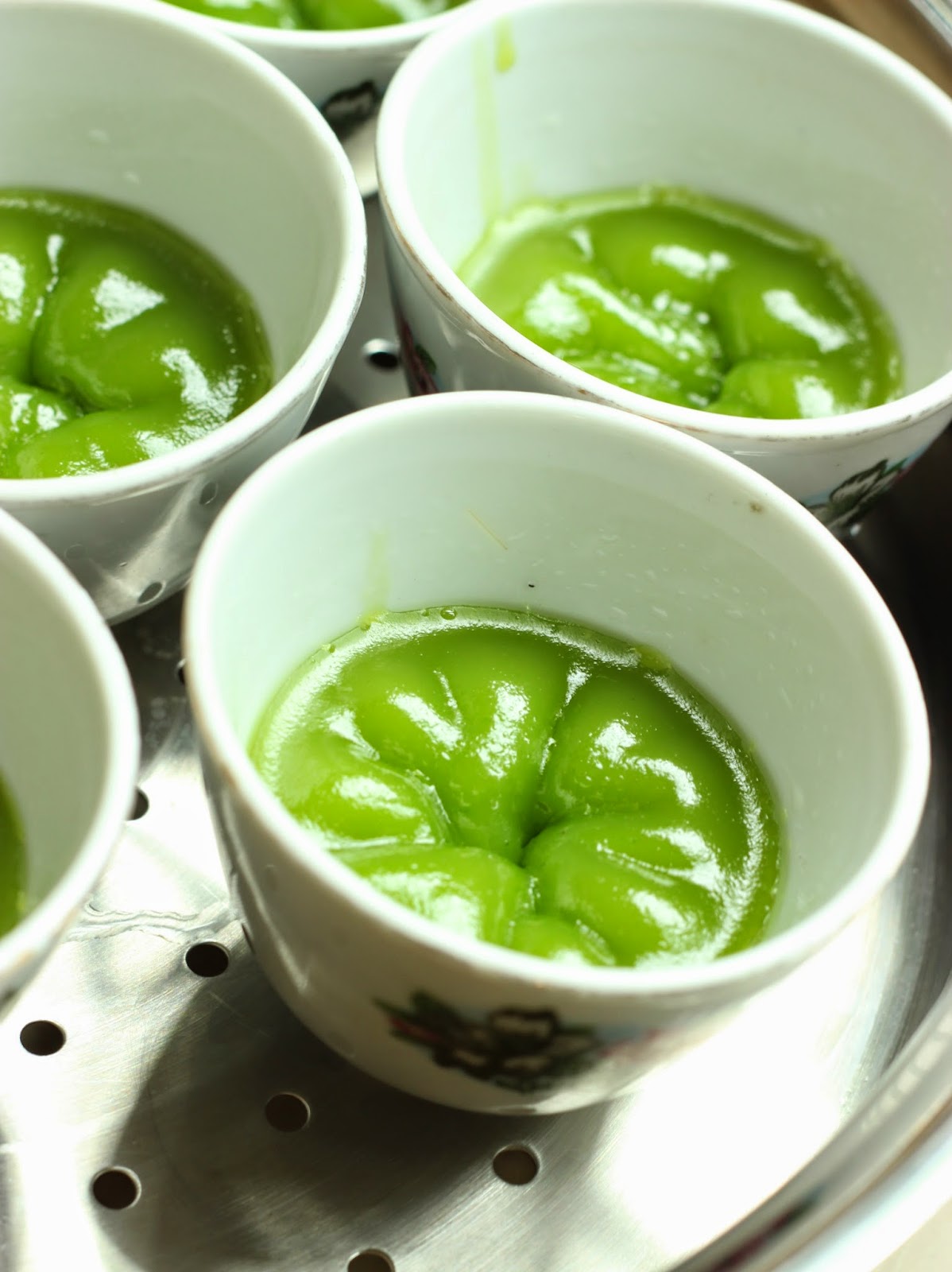I consider myself blessed to be staying in Malaysia. It has a mix of ethnicity and a diverse culture. Kuih is no stranger to any Malaysian and we have a vast array of it coming mainly from the Malays, the Nyonyas, the Chinese and some from the Indians. The word kuih represents primarily sweet cakes but at times, also include savouries such as pulut panggang, kuih cara lauk and cucur badak. Although diverse, it is made primarily of flour, rice flour, pandan leaf, coconut, sugar and palm sugar. The stark difference with western cakes is that there is normally no use of leavening agent and the texture is more often chewy than fluffy.
 |
| I have the misfortune of misreading the recipe. The dimple is not as pretty as it is supposed to be. But if you follow correctly this recipe, you should be able to get that round dimple. |
Kuih lompang or directly translated to "void" cake (google translate) is an extremely easy to make dessert. It got its name from that dimple formed in the middle of the kuih after steaming. Traditionally it comes in two flavours - pandan and palm sugar. As the name suggests, it is essential that you get that dimple to be considered a good kuih lompang. But if you don't, no worries. It really makes no difference to the taste.
I normally buy my kuih lompang as it is ridiculously easy to get here. Therefore, there isn't any need to make this. However I made this anyway for the benefit of those staying abroad who has not tasted it before. This recipe is also perfect for Malaysians abroad who have a special craving for this kuih but are unfortunate enough to have to make it from scratch. This recipe uses natural flavouring and colouring from the pandan. If you could sniff the natural pleasant smell of the pandan, chances are you would want to taste it...now!
Kuih Lompang Pandan
Makes 16 kuihs
Ingredient
1 1/2 cup rice flour
1 tbsp tapioca flour
1 tsp air kapur (calcium hyroxide)
3/4 cup sugar
2 cup water
8 dark pandan (screwpine) leaf, cut into little pieces
1/2 cup fresh grated coconut
1/4 tsp salt
Cooking Instructions
1. Cut pandan leaves into small pieces. Blend leaves with 1 cup of water. Strain. In another bowl, pour sugar into 1 cup of hot water. Stir until sugar dissolves. Add pandan liquid into the syrup. Add air kapur.
2. Combine rice flour and tapioca flour. Pour flour into the pandan syrup. Combine well. Strain to ensure there are no lumps.
3. Heat up steamer. Brush mini tea cups with a little bit of oil and put it into steamer for a while. Pour batter into each individual cups. Steam for 15 mins over medium high heat. Remove from fire and set aside to cool.
4. Add salt to grated coconut. Steam grated coconut briefly.
5. Once cooled, remove kuih from the cups using the back of a spoon. Serve with grated coconut on top.
Notes
1. As I do not have those mini cups, I used tea cups. Turns out larger than the original.
2. It might be difficult to find air kapur and pandan abroad. You can replace air kapur with alkaline water and pandan leaves with pandan extract. As for the grated coconut, I advise you to use fresh ones. Otherwise, you can replace with dessicated coconut but the texture would taste different.


Can we skip the alkaline water?
ReplyDeleteCan, if you don't mind to compromise a little on the "bouncuness" of the texture.
Delete